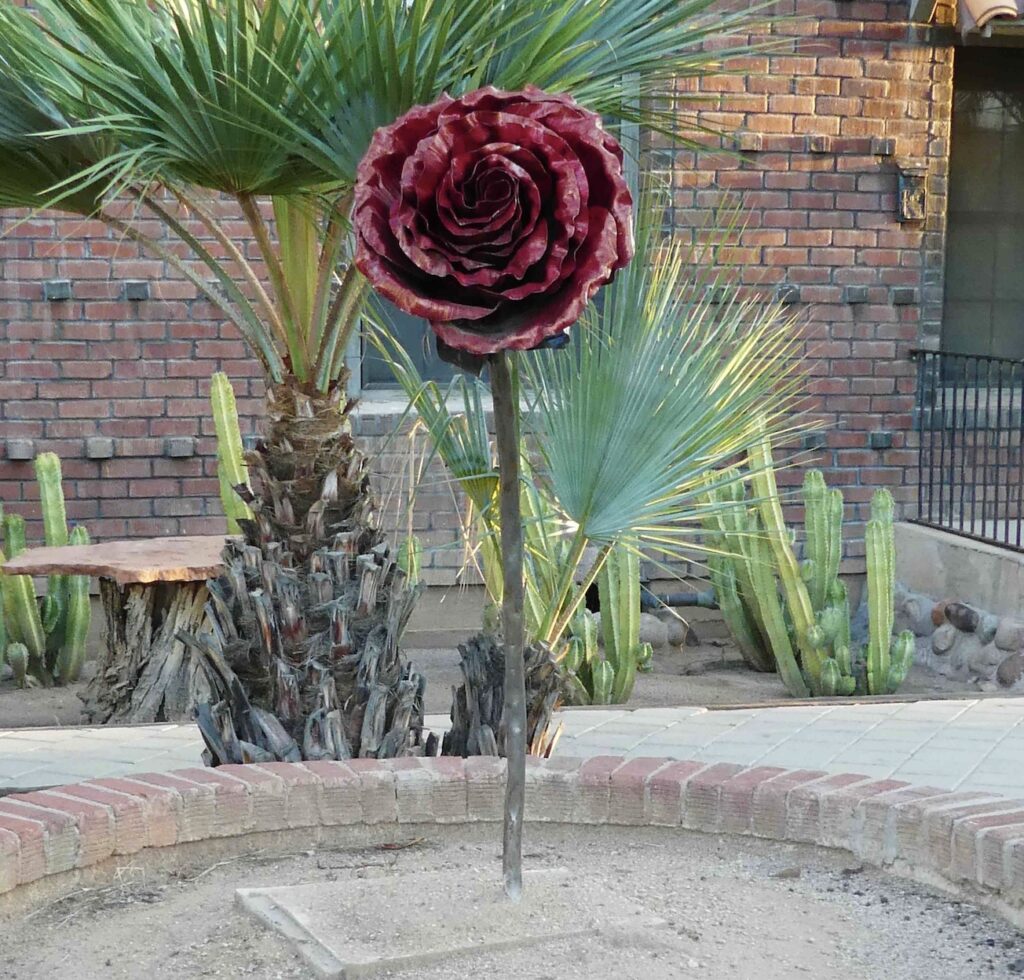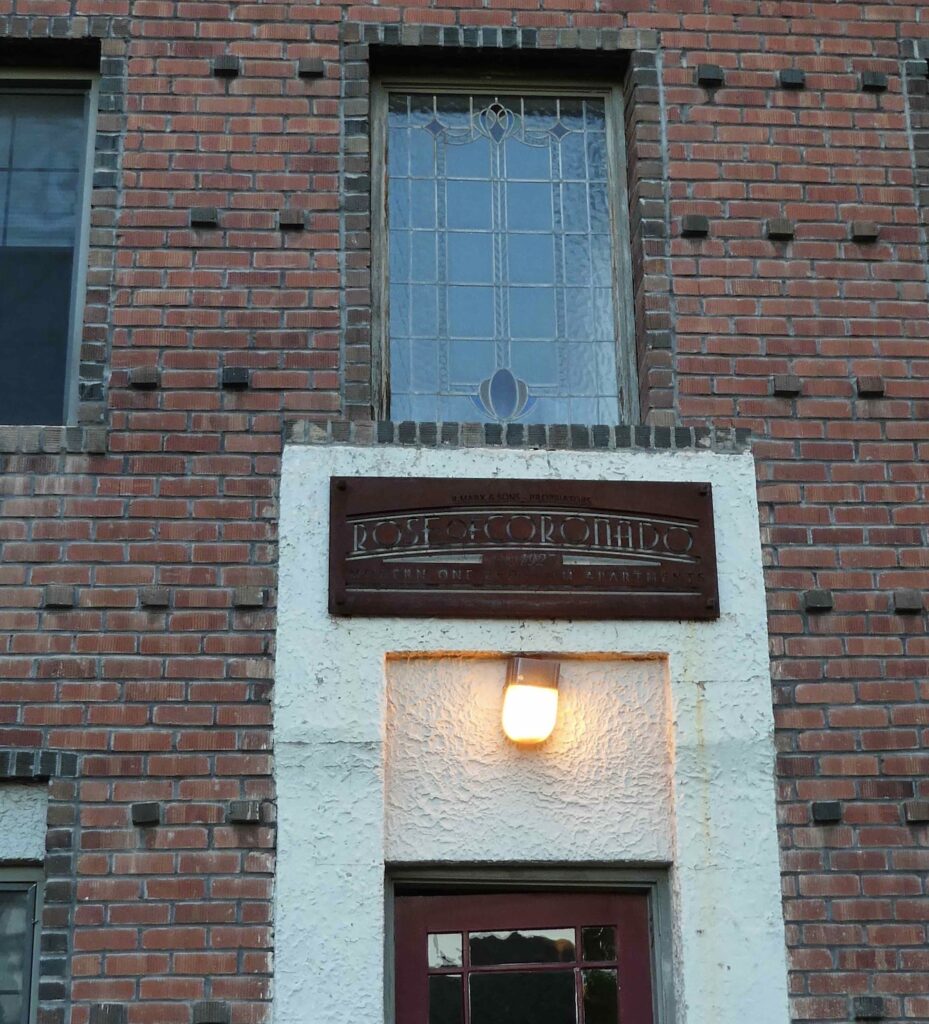Donna Reiner has written many articles over the years for the Arizona Republic and others about Phoenix history and memorials. She is a regular contributor to our newsletter. This month, Donna tells us about the The Rose of Coronado.
Surrounded by towering Palm trees, you might drive by and miss this charming two-story brick apartment building in historic Coronado neighborhood.
Coronado is one of the larger early Phoenix historic districts. This district encompasses a number of small subdivision plats. Many of these smaller subdivisions were originally portions of Syndicate Place, Homewood Tract, and Ranchitos Bonitos subdivisions as people would buy just a portion and then subdivide it. Los Olivos Heights, the subdivision where these apartments are located, was directly across 7th Street from Los Olivos, a higher end subdivision developed by Dwight B. Heard.
Los Olivos Heights consists of 188 lots covering 8 blocks for a total of 44 acres. The subdivision opened the morning of February 14, 1912, the day Arizona became a state. J.W. Stacy and Oscar Irvin, local real estate developers, had Phoenix Title and Trust subdivide this acreage which originally belonged to J. A. R. Irvine. Stacy and Irvin actually sold three lots that first day of sales (perhaps a few people were more interested in real estate than the statehood festivities).
Sylvan C. Ganz, a bachelor and a member of an early Phoenix family, purchased this corner lot in June 1916. Based on a 1914 promotional ad for the Los Olivos Heights Subdivision, he may have purchased other lots. After all, this was considered to be an up and coming area to live. However, Ganz merely held onto the property until he sold it to Josephine Nova in March 1920 for $550. Josephine and her husband didn’t build on the lot either. But they did not sell it for seven years.
Rose Bachowetz bought the lot in April 1927. Shortly thereafter, Rose and her husband, Wladimir, applied for a building permit for this empty corner lot. Wladimir, or Walter as he was often called, was the contractor. A 1938 ad lists some of the apartment complex’s amenities. Being within one block of the Brill Streetcar line made it ideal for the workers who presumably occupied the units.
The brick vernacular building began as 8 apartments and was considered to be quite modern. It was certainly different from its neighbors. The exterior brick work even demonstrates some creative detail on the part of the builder and we have no idea where Bachowetz got his building experience.
As the property was very near Emerson Elementary School, it presumably was appropriate to call the place The Emerson Apartments. At least that was the name used into the 1960s.
Did the Rose and Walter Bachowetz build other things that you should know about? Actually they did construct some small homes, but nothing as large as this small apartment complex. Whether those structures still exist is another issue. Like Rose and Walter Bachowetz, they have disappeared from Phoenix records.
The current owner, in tribute to Rose Bachowetz, renamed the apartments The Rose of Coronado. As Shakespeare wrote in “Romeo and Juliet,” “A rose by any other name would smell as sweet.” Coronado neighborhood has this Rose nestled amongst majestic palms which provide a small haven in the bustling “hood.”












